Delve into the profound symbolism of ancient Egyptian colors such as black, gold, and blue. Discover how these vibrant hues represented spirituality, nature, power, and innovation, influencing art, religion, and daily life while revealing the essence of Egypt's rich culture.
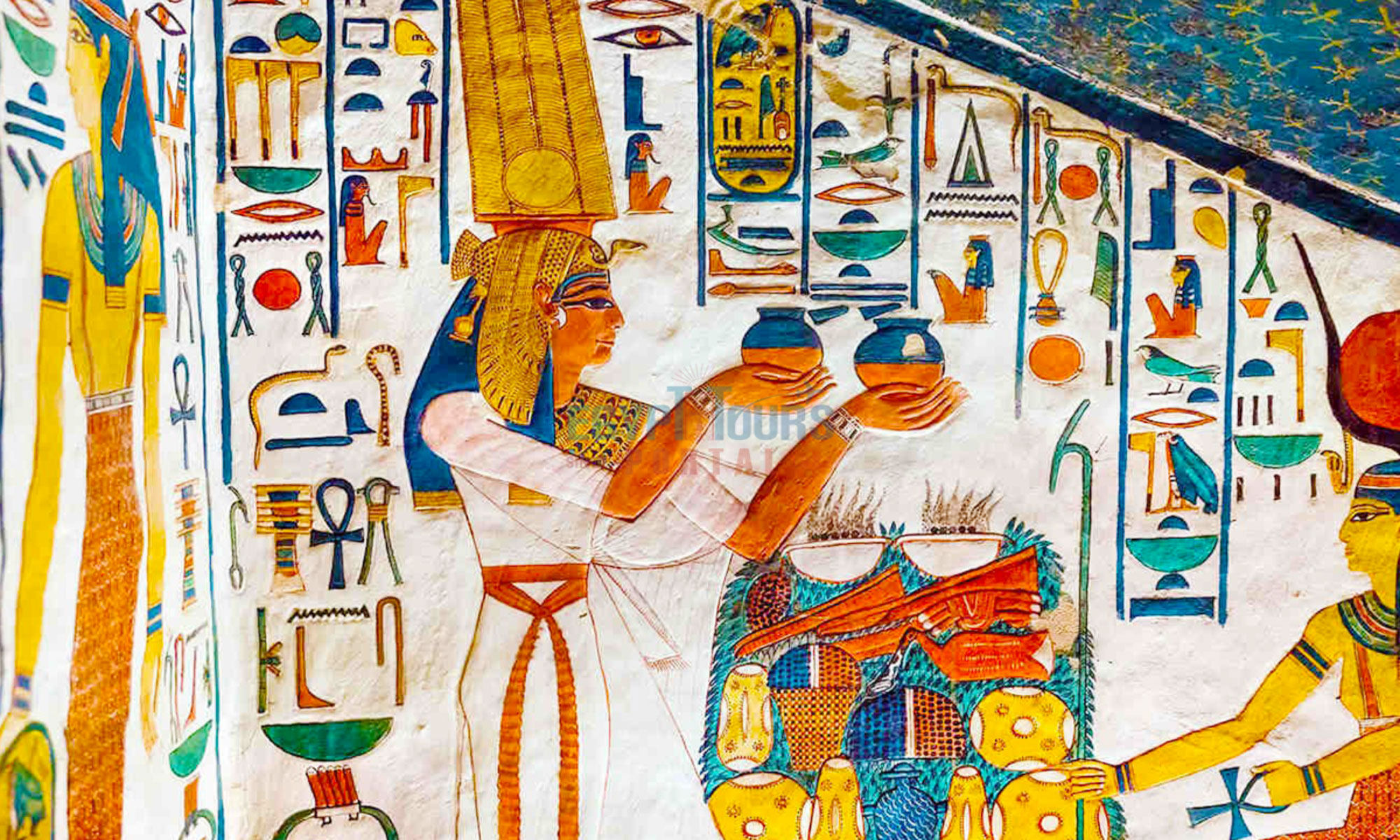
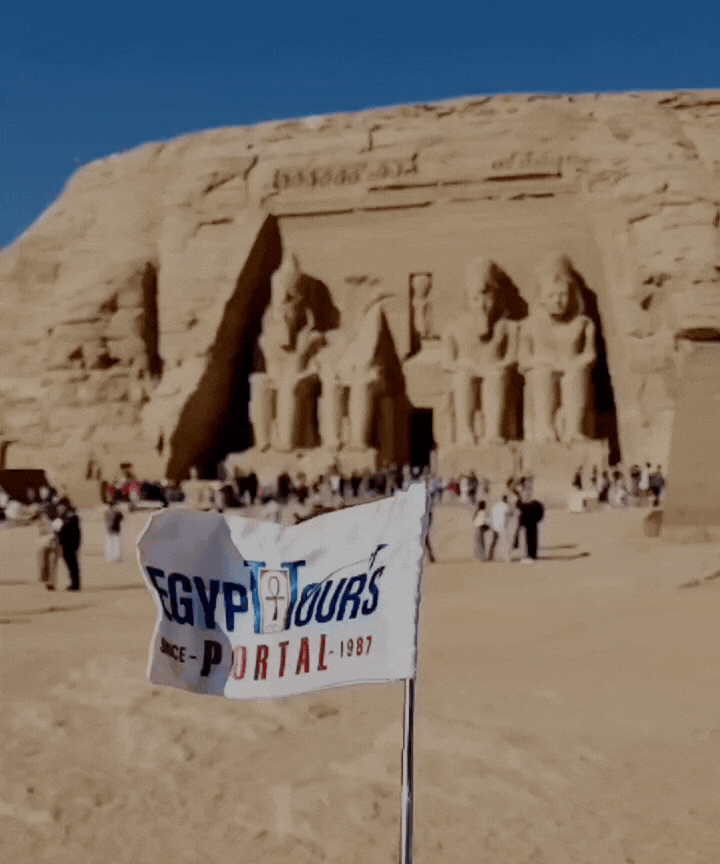
The colors of ancient Egypt have captivated humanity for millennia, adorning everything from majestic temples to intricate tomb paintings and regal artifacts. Far from being merely decorative, these colors were imbued with profound meaning, reflecting the culture’s deep spiritual beliefs, social hierarchy, and connection to the natural world. The Egyptians viewed color (iwen, meaning both "appearance" and "essence") as an intrinsic part of an object or being’s nature, making their palette a powerful tool for storytelling and religious expression.
From the shimmering gold of the gods to the fertile green of the Nile’s bounty, every color held symbolic significance, shaping how the Egyptians understood life, death, and the cosmos. With remarkable ingenuity, they developed pigments from natural minerals and even pioneered synthetic colors like Egyptian blue, demonstrating a mastery of chemistry and artistry. Everyone will get to explore the multifaceted role of color in ancient Egyptian culture, its symbolic meanings, technical innovations, and enduring legacy.
IMPORTANT NOTE:
This information does not seek to degrade or insult any religion. All the information is based on historical evidence, any similarities that you may find with your own faith or religion are from the figment of your imagination.

The ancient Egyptians used colors as more than mere decorative elements; they were imbued with profound symbolic and religious meanings that permeated all aspects of their culture. From the Early Dynastic Period (c. 3150–2613 BCE) through the Ptolemaic Period (305–30 BCE), colors represented abstract concepts such as divinity, purity, fertility, chaos, and eternity. These associations were rooted in the Egyptians' natural environment, religious beliefs, and worldviews. Here is a detailed analysis:
Black was a color of dual meanings, representing both death and rebirth, but never evil. It was associated with:
The Nile’s Fertility: The term kemet ("the Black Land") referred to the rich, fertile silt deposited by the Nile River during its annual flood, which sustained agriculture and life.
Regeneration and Resurrection: Black was linked to one of the Gods of Ancient Egypt, Osiris, the god of the underworld and eternal life, who was often depicted with black skin to symbolize his role as a deity of fertility and rebirth. Statues of Osiris and funerary statues were frequently crafted from black basalt to convey this association.
The Afterlife Of Ancient Egypt: Black was also connected to the underworld, serving as a symbolic bridge between the worlds of the living and the dead.
Artifacts like black-painted sarcophagi from the Middle Kingdom and the New Kingdom (c. 2055–1069 BCE) emphasize the protective and regenerative powers associated with this hue.
White was central to the Egyptians' conception of purity and the sacred. Its uses included:
Priestly and Ritualistic Objects: White linen was the standard material for priestly garments, reflecting the clarity and cleanliness required for sacred duties.
Sacred Tools and Temples: Ritual tools and temple furnishings were often crafted from white alabaster, a luminous stone that symbolized divine purity.
The White Crown (Hedjet): The crown of Upper Egypt, worn by rulers during ceremonies, symbolized divine kingship and cosmic order. White also had celestial connotations, representing the stars and the moon, further emphasizing its connection to the divine realm.
Red carried a dual meaning, embodying vitality and danger:
The Energy of Life: Red was the color of blood and fire, symbolizing power, passion, and the essence of life. Red ochre was used in depictions of male skin tones to represent vigor and activity.
The Desert and Chaos: Red also represented the harshness of the desert (Deshret, the "red land") and was associated with Set, the god of chaos, storms, and violence.
Funerary and Protective Use: Red pigments, such as those found in burial rites, symbolized the life force and were believed to protect the deceased from malevolent forces.
Paintings and reliefs from the Predynastic Period (c. 4000–3150 BCE) already show the use of red pigments, emphasizing their long-standing importance in Egyptian culture.
Green was one of the most universally positive colors in Egyptian symbolism, representing:
Vegetation and Growth: Green symbolized the lush fields of the Nile and the cyclical renewal of life. The hieroglyph for green was a papyrus stem, underscoring its connection to nature.
The Afterlife: The “Field of Malachite” was an epithet for the Egyptian afterlife, a verdant paradise. Osiris was often depicted with green skin, representing his role as the god of fertility and rebirth.
Health and Protection: Malachite, a green mineral, was used in jewelry and cosmetics. Green amulets symbolized well-being and were worn for protection.
Tomb murals from the New Kingdom (c. 1570–1069 BCE) frequently incorporated green to depict scenes of renewal and eternal life.
Blue was a sacred and protective color, associated with:
The Sky and Water: Blue symbolizes the heavens and the primeval waters of creation. Ceiling paintings in temples and tombs were often painted blue to represent the cosmic order.
Divine Attributes: Gods like Amun and Nut were depicted with blue skin to signify their celestial and protective qualities.
Technological Innovation: The creation of Egyptian blue, the first synthetic pigment, during the Early Dynastic Period (c. 3150–2613 BCE) underscores its importance. This pigment was used extensively in royal tombs, temples, and statues.
The brilliant use of blue in the tomb of Thutmose III (18th Dynasty, c. 1458 BCE) illustrates its spiritual and symbolic resonance.
Yellow, often associated with gold, symbolized:
Eternal Life and the Sun: Yellow was connected to Ra, the sun god, and the idea of immortality. Statues and coffins were often gilded or painted yellow to invoke these qualities.
Divine Flesh: Gods were believed to have golden skin, making yellow the color of divine perfection. Tutankhamun’s golden mask (c. 1323 BCE) exemplifies this belief.
Funerary Art: Yellow was used to depict the eternal and unchanging nature of the afterlife, as seen in the elaborate sarcophagi of the New Kingdom.
Explore the incredible symbols of ancient Egypt that shed light on the mythological and artistic meaning of the ancient Egyptian Civilization.
Read More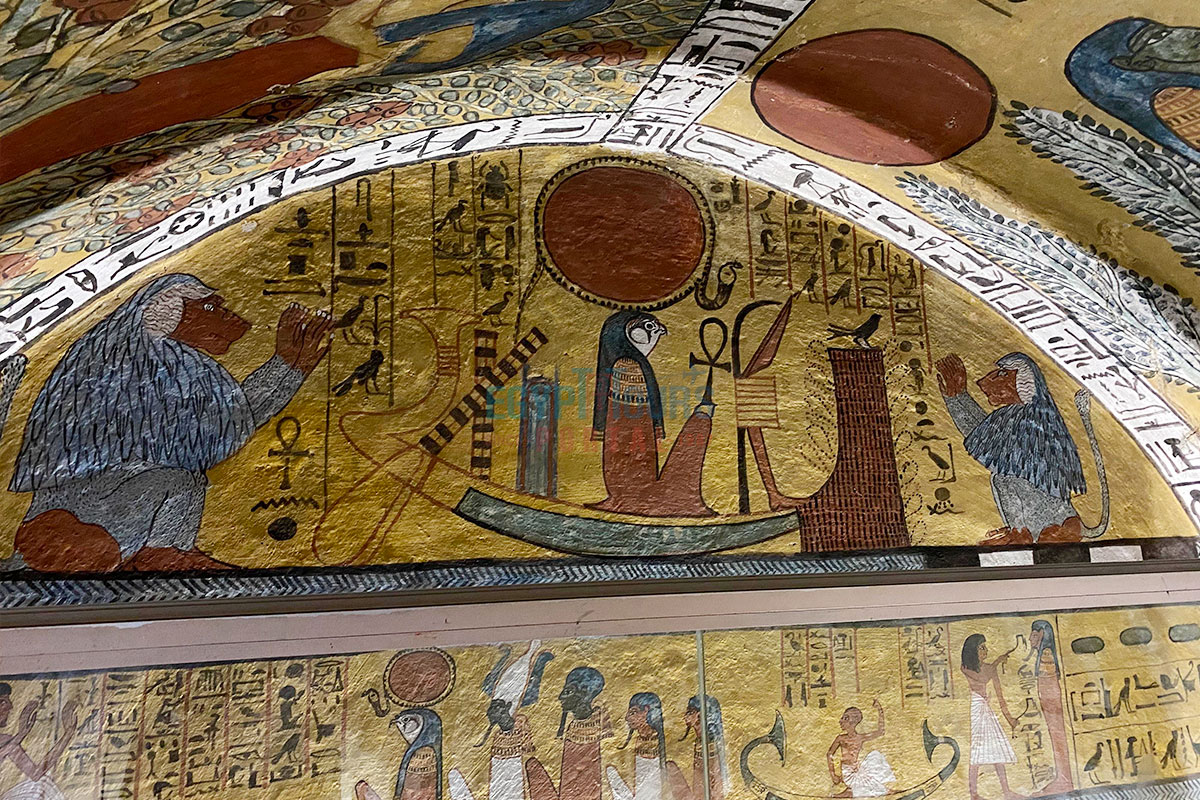
Egyptian culture emphasized balance and harmony, reflected in their use of complementary colors:
Red and White: The unification of Upper and Lower Egypt under King Narmer (c. 3100 BCE) was symbolized by the pschent, a double crown combining the white crown of Upper Egypt (Hedjet) with the red crown of Lower Egypt (Deshret). This duality signified political and cosmic order.
Green and Black: These colors were interchangeable in their association with life and resurrection. The fertile black silt and the green fields of the Nile Valley represented the eternal cycle of life.
Gold and Silver: Representing the sun and moon, this pairing emphasized celestial duality. Silver, rarer than gold in Egypt, was used sparingly and signified the light of the moon and stars.

The pigments used by Egyptian artisans were derived from both local and imported materials:
Red and Yellow Ochre: Mined from the deserts of Egypt, ochre was ground into powder and mixed with binders to create paint.
Malachite (green) and Azurite (blue): Found in the Eastern Desert and Sinai, these minerals were prized for their vibrant hues. Evidence of their use dates back to the Old Kingdom (c. 2613–2181 BCE).
Carbon Black: Derived from charred wood and bones, black pigment was ubiquitous in depictions of hair, eyes, and hieroglyphic inscriptions.
Egyptians were pioneers in synthetic pigments:
Egyptian Blue: Known as the first artificial pigment, it was widely used from the Old Kingdom to the Roman Period. Fragments of Egyptian blue have been discovered in the tombs of Giza and Amarna.
Lead Antimonite Yellow: Developed during the New Kingdom (c. 1570–1069 BCE), this pigment created a vibrant, long-lasting yellow hue that adorned the walls of tombs like those of Amenhotep III and Tutankhamun.
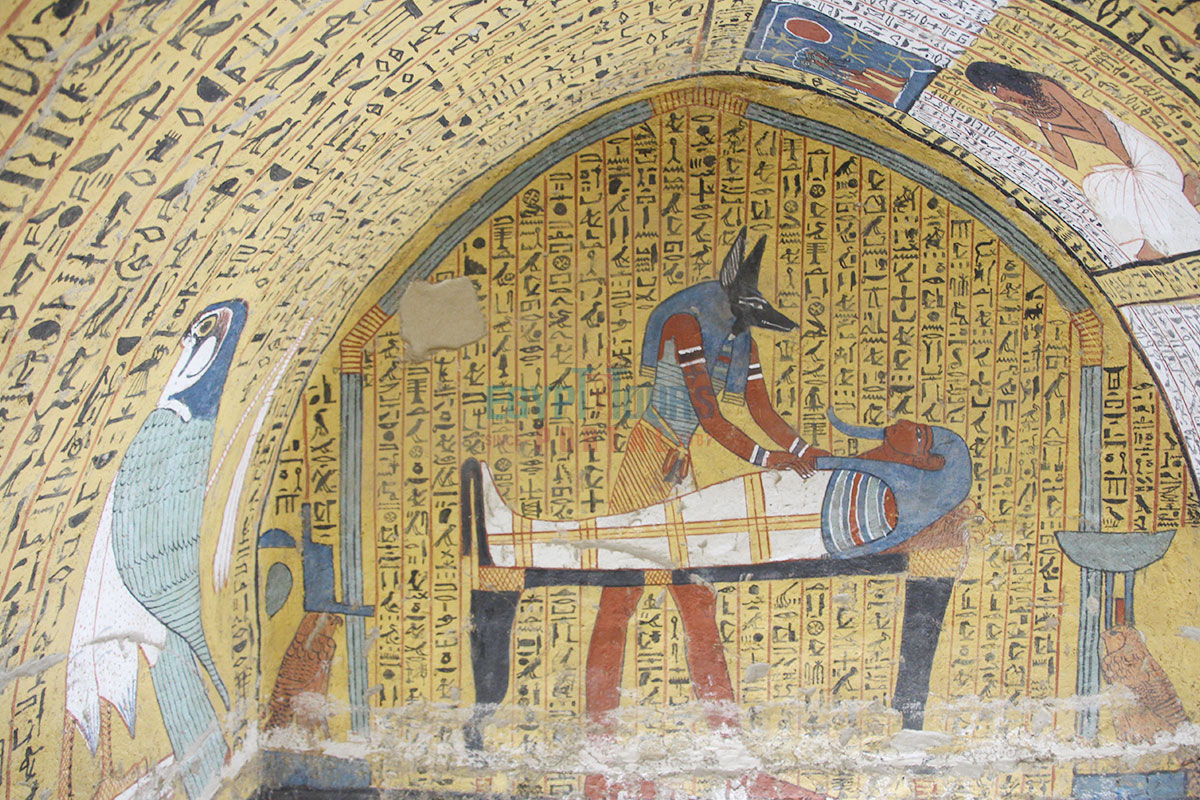
Colors played a vital role in the visual representation of gods:
Gold: The sun god Ra was depicted with golden skin, reflecting his role as a life-giver. Amulets and jewelry often included gold to invoke divine protection.
Blue: Deities such as Amun and Nut were painted blue to symbolize their connection to the heavens and cosmic order.
Colors in the paintings of the Ancient Egyptian Tombs were more than aesthetic; they were imbued with magical properties:
Green and Black: Used to depict Osiris and the verdant afterlife, ensuring the deceased’s renewal and immortality.
Yellow: Often used for coffins and masks, it represented the soul's eternal nature. The gilded mask of Tutankhamun remains a quintessential example.

Textiles were primarily white, as linen was the fabric of choice. However, dyed fabrics became increasingly popular during the New Kingdom:
Indigo and Saffron: Reserved for the elite, these dyes symbolized wealth and luxury.
Cosmetics were a significant aspect of Egyptian life:
Green Malachite: Applied as eyeshadow, it was believed to ward off evil spirits and enhance health.
Black Kohl: Used to protect the eyes from the sun and as a symbol of beauty.
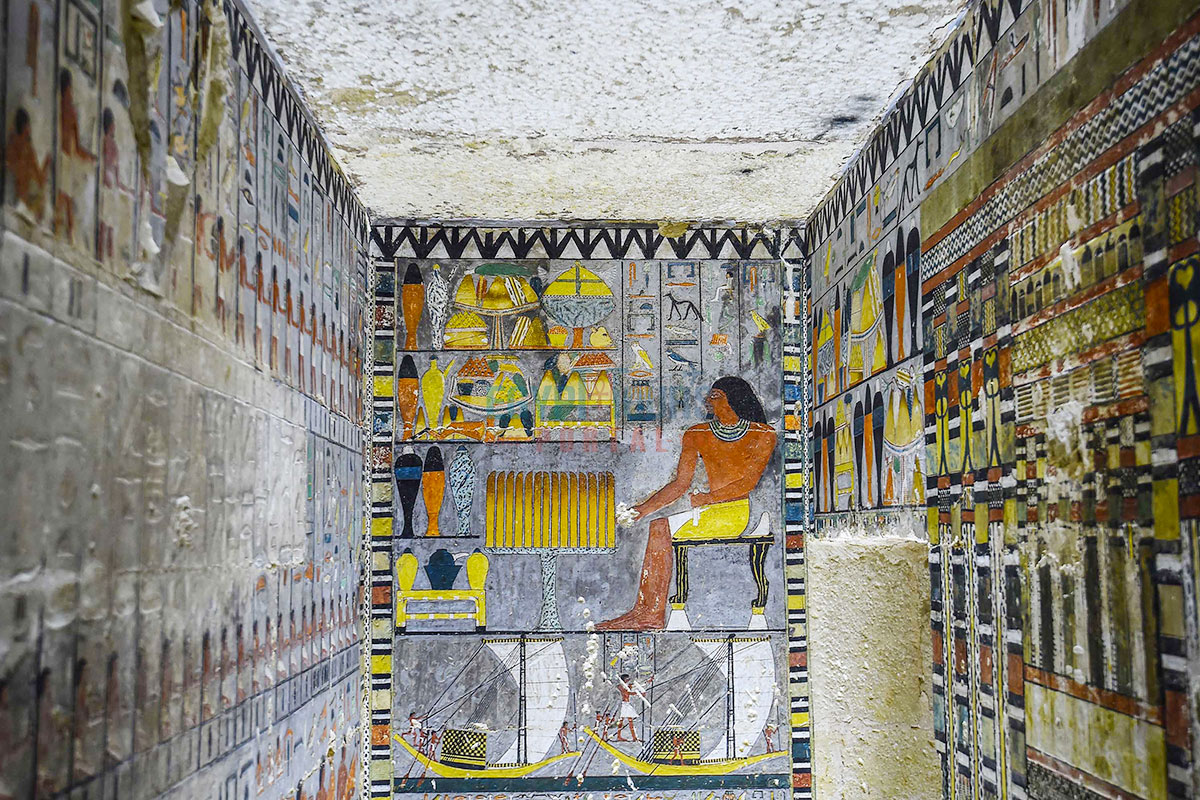
Over the millennia, Egyptian pigments have faced deterioration due to:
Environmental Factors: Exposure to sunlight and humidity has caused fading.
Chemical Reactions: Pigments like verdigris have blackened due to reactions with sulfides.
Many contemporary projects focus on restoring the vibrancy of Egyptian art:
Digital Imaging: Advanced scanning technology reconstructs original colors without altering artifacts. The Tomb of Nefertari (19th Dynasty, c. 1255 BCE) was digitally reconstructed to preserve its vivid murals.
Ethical Practices: Restorers balance the need for preservation with respect for historical authenticity, using reversible methods to minimize permanent alterations.
By tracing the symbolism, materials, and techniques behind ancient Egyptian colors, we gain a deeper understanding of their cultural significance. From the divine radiance of gold to the regenerative power of green, the ancient Egyptians’ sophisticated use of color reflects their profound connection to life, death, and eternity.
The colors of ancient Egypt were aesthetic choices with a deeply symbolic meaning, reflecting the civilization’s profound connection to nature, spirituality, and the cosmos. Each color held intrinsic meaning, from black representing fertility and resurrection to gold symbolizing divinity and eternity. The Egyptians’ mastery of both natural and synthetic pigments, such as Egyptian blue, demonstrates their innovative artistry and technological prowess.
Through their vibrant palette, the Egyptians immortalized their beliefs in the afterlife, cosmic harmony, and societal order, leaving a legacy that continues to captivate and inspire. The divine beauty of the radiant colors of Egypt is found across all the temples and constructions of all the cities of Egypt, which everyone can easily explore with our marvelous Egypt Tours and Nile Cruises.
Private 4 Days Cairo Tour Packages for Indian Travelers 4 days Cairo Egypt Tour pack...
Tour Location: Cairo – Giza...
5 Days Cairo and Alexandria Tour Package For Indian Travelers 5 days Cairo and Alexa...
Tour Location: Cairo/Giza/Alexandria...
6 Days Cairo, Luxor & Aswan Tour Package For Indian Travelers 6 days Cairo, Luxo...
Tour Location: Cairo/Giza/Aswan/Luxor...
Amazing 7 Days Cairo and Hurghada Holiday for Indian Travelers 7 Days Cairo & Hu...
Tour Location: Cairo – Giza – Hurgh...
Each color had a specific symbolic meaning:
Colors were derived from natural pigments:
Egyptian Blue Was the First Synthetic Pigment, Made From Ground Silica, Lime, Copper, and Alkali. It Was Highly Durable and Symbolized Protection and the Divine.
Colors in tombs and religious art symbolized eternal life and protection. For example, gold was used to depict gods and eternal beings, and green often appeared in scenes of agricultural fertility.
Gold was used to portray their immortality and connection to the sun god Ra. Blue and green reflected their role as protectors of life and fertility.
They used binding agents like egg whites or gum Arabic mixed with pigments, creating paints that adhered well to stone and plaster.
Yes, vibrant colors like gold and blue were associated with royalty and the elite, while simpler, earth-toned colors were common for the general population.
White linen was most common due to its association with purity and the hot climate, but dyes were used sparingly, as vibrant colors were expensive and often reserved for the elite.
Environmental factors like sunlight, humidity, and chemical reactions over millennia caused fading. However, some pigments, like Egyptian blue, have remained remarkably vibrant.
Preservation techniques include controlling light exposure, humidity, and temperature, as well as using advanced imaging to study and restore faded pigments.
Colors were paired to symbolize balance and harmony, such as red and white representing the unification of Upper and Lower Egypt.
Yes, Egyptians used green malachite and black kohl for eye makeup, both for aesthetic purposes and as protection against the sun and evil spirits.
The entire country of Egypt deserve to be explored with its every heavenly detail but there are places that must be seen before any other such as the breathtaking Hurghada's red sea, The wonders of Cairo the pyramids of Giza, the great sphinx, the Egyptian Museum, Khan El Khalili Bazaar, the wonders of Luxor like Valley of the Kings, Karnak & Hatshepsut temple and the wonders of Aswan such as Abu Simbel temples, Philea temple, Unfinished obelisk and The Wonders of Alexandria like Qaitbat Citadel, Pompey's Pillar and Alexandria Library. Read more about the best places to visit in Egypt.
If you want to apply for a Visa On Arrival that lasts for 30 days then you should be one of the eligible countries, have a valid passport with at least 6 months remaining and pay 25$ USD in cash, as for the E-Visa for 30 day you should have a valid passport for at least 8 months, complete the online application, pay the e-visa fee then print the e-visa to later be presented to the airport border guard. You could also be one of the lucky ones who can obtain a free visa for 90 days. Read more about Egypt travel visa.
Egypt has a variety of delicious cuisines but we recommend “Ful & Ta’meya (Fava Beans and Falafel)”, Mulukhiya, “Koshary”, a traditional Egyptian pasta dish, and Kebab & Kofta, the Egyptian traditional meat dish.
The best time to travel to Egypt is during the winter from September to April as the climate becomes a little tropical accompanied by a magical atmosphere of warm weather with a winter breeze. You will be notified in the week of your trip if the Climate is unsafe and if any changes have been made.
You should pack everything you could ever need in a small bag so you could move easily between your destinations.
We have been creating the finest vacations for more than 20 years around the most majestic destinations in Egypt. Our staff consists of the best operators, guides and drivers who dedicate all of their time & effort to make you have the perfect vacation. All of our tours are customized by Travel, Financial & Time consultants to fit your every possible need during your vacation. It doesn't go without saying that your safety and comfort are our main priority and all of our resources will be directed to provide the finest atmosphere until you return home.
You will feel safe in Egypt as the current atmosphere of the country is quite peaceful after the government took powerful measures like restructuring the entire tourist police to include all the important and tourist attractions in Egypt. Read more about is it safe to travel to Egypt.
Wear whatever feels right and comfortable. It is advised to wear something light and comfortable footwear like a closed-toe shoe to sustain the terrain of Egypt. Put on sun block during your time in Egypt in the summer to protect yourself from the sun.
The best activity is by far boarding a Nile Cruise between Luxor and Aswan or Vise Versa. Witness the beauty of Egypt from a hot balloon or a plane and try all the delicious Egyptian cuisines and drinks plus shopping in old Cairo. Explore the allure and wonders of the red sea in the magical city resorts of Egypt like Hurghada and many more by diving and snorkeling in the marine life or Hurghada. Behold the mesmerizing western desert by a safari trip under the heavenly Egyptian skies.
There are a lot of public holidays in Egypt too many to count either religious or nation, the most important festivals are the holy month of Ramadan which ends with Eid Al Fitr, Christmas and new years eve. Read more about festivals & publich holidays in Egypt.
Egypt is considered to be one of the most liberal Islamic countries but it has become a little bit conservative in the last couple of decades so it is advised to avoid showing your chest, shoulders or legs below the knees.
Arabic is the official language and Most Egyptians, who live in the cities, speak or understand English or at least some English words or phrases. Fewer Egyptians can speak French, Italian, Spanish, and German. Professional tour guides, who work in the tourism sector, are equipped to handle visitors who cannot speak Arabic and they will speak enough English and other languages to fulfill the needs of all our clients.
The fastest way is a car, of course, a taxi. If you are in Cairo ride a white taxi to move faster or you could board the fastest way of transportation in Egypt metro if the roads are in rush hour.
The temperature in Egypt ranges from 37c to 14 c. Summer in Egypt is somehow hot but sometimes it becomes cold at night and winter is cool and mild. The average of low temperatures vary from 9.5 °C in the wintertime to 23 °C in the summertime and the average high temperatures vary from 17 °C in the wintertime to 32 °C in the summertime. The temperature is moderate all along the coasts.
It is the home of everything a traveler might be looking for from amazing historical sites dating to more than 4000 years to enchanting city resorts & beaches. You will live the vacation you deserve as Egypt has everything you could possibly imagine.









